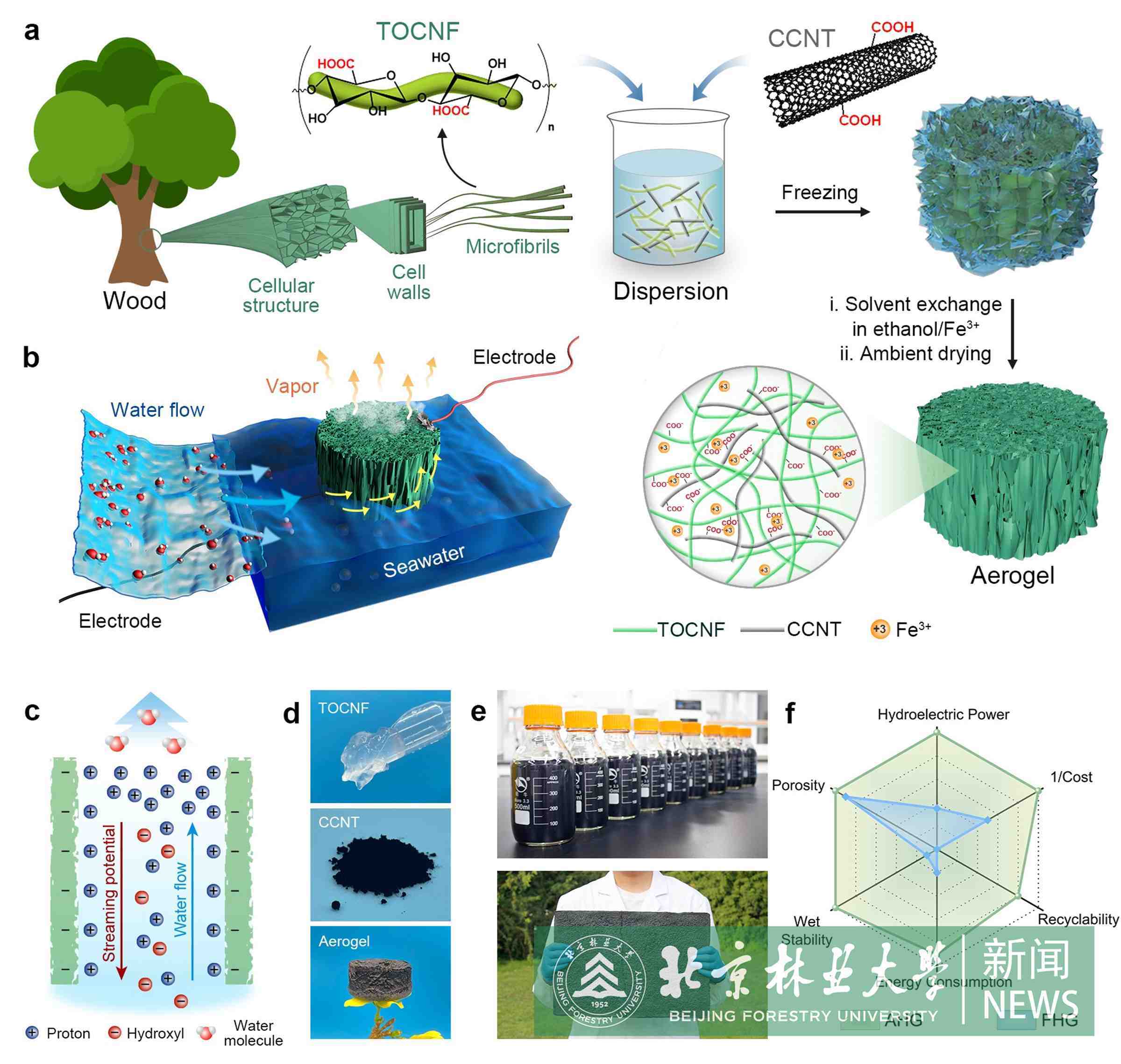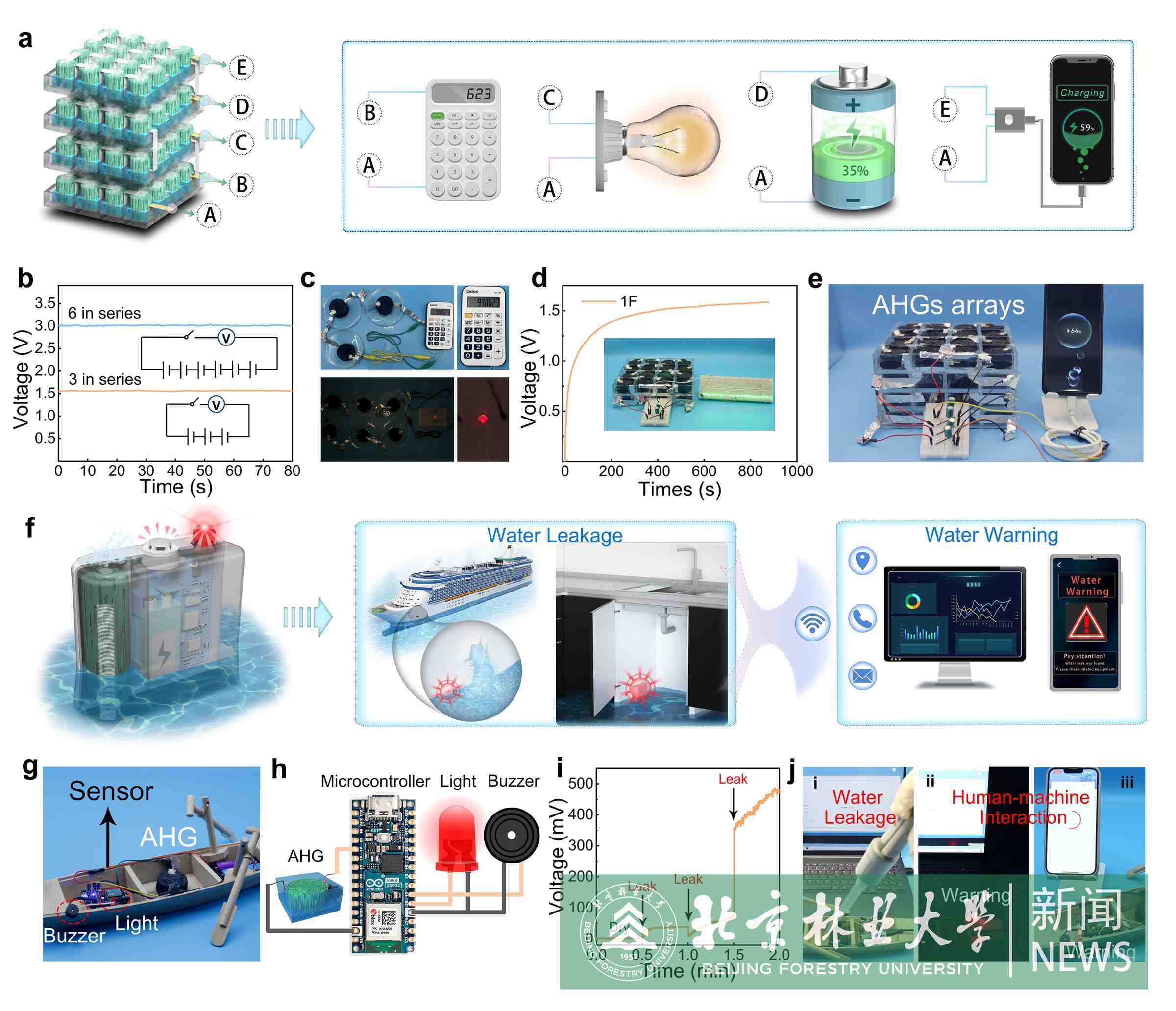Latest news
Professor Xu Feng's team from the College of Materials Science and Technology has made advancements in cellulose aerogel research. Their latest findings were published in Advanced Functional Materials (IF=18.5) with the title "Ambient-Dried Nanocellulose Composite Aerogels for Enhanced Hydrovoltaic Electricity Generation".

To meet the growing worldwide demand for sustainable energy and alleviate the environmental pollution caused by fossil fuels, efficient energy harvesting from various clean energy sources, such as hydro, wind, solar, thermal, mechanical, and tidal energy, has achieved rapid development. Water, covering 71% of the Earth's surface and constantly circulating and driven by absorbed solar energy, possesses enormous amounts of sustainable energy that can be exploited. In addition to conventional hydropower technology, which converts the mechanical energy of bulk water flow into electricity based on the principles of electrodynamics, recently emerging hydrovoltaic electric generators (HEGs), which are capable of harnessing electricity directly from the interactions between functional materials and various forms of water, especially water evaporation, have drawn increasing attention and opened up a promising source of green energy. However, the development and practical application of high-power, long-duration, and sustainable water evaporation-driven HEGs still face significant challenges.

Herein, an efficient HEG based on ambient-dried composite aerogels (ADAs) composed of nanocellulose and carbon nanotubes (CNTs) is presented by Xu Feng's research team. The abundant carboxyl groups on the nanocellulose and CNTs enable electrostatic complexation with metal ions. This not only stabilizes the engineered porous ADA architecture during both ambient drying and operation but also enhances spontaneous and continuous electricity generation by boosting interactions with water molecules. The prepared HEG demonstrates an outstanding output voltage of 697 mV and a high power density of 0.57 µW cm−2 for long-term operation in water. Furthermore, the HEG exhibits significantly improved performance when operating in brine, achieving an output voltage of 850 mV and a power density of 3.82 µW cm−2. This research demonstrates that large-scale integrated HEGs units can provide customized electricity output to power various electronics and efficiently detect water leaks through human–machine interactions. This study provides a reliable and efficient strategy for fabricating efficient nanocellulose HEGs and paves the way for self-powered water sensing.
The paper's first author is Cao Mengyao, a doctoral student from the College of Materials Science and Technology. Associate Professor Chen Sheng and Professor Xu Feng are the co-corresponding authors, with Beijing Forestry University as the signature unit of the first author.
The research received financial support from the National Natural Science Foundation of China (Nos. 22378023, 22108014, and U22A20422), the Project of Tianshan Innovation Team Plan, China (No. 2023D14020), and the 5·5 Engineering Research & Innovation Team Project of Beijing Forestry University (No. BLRC2023B01).
Paper link: https://doi.org/10.1002/adfm.202418823
Written by Chen Sheng
Translated and edited by Song He
Reviewed by Yu Yangyang












